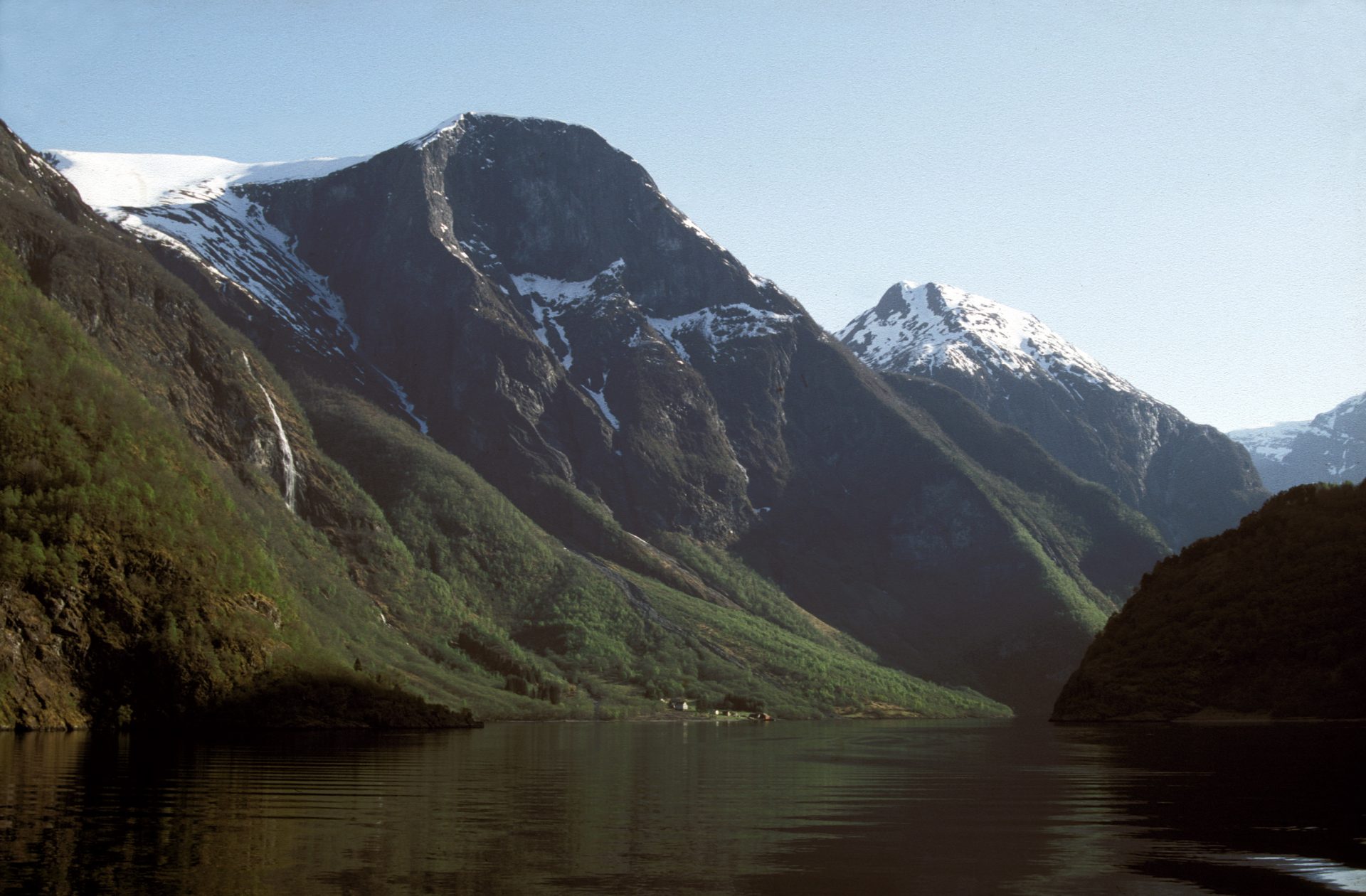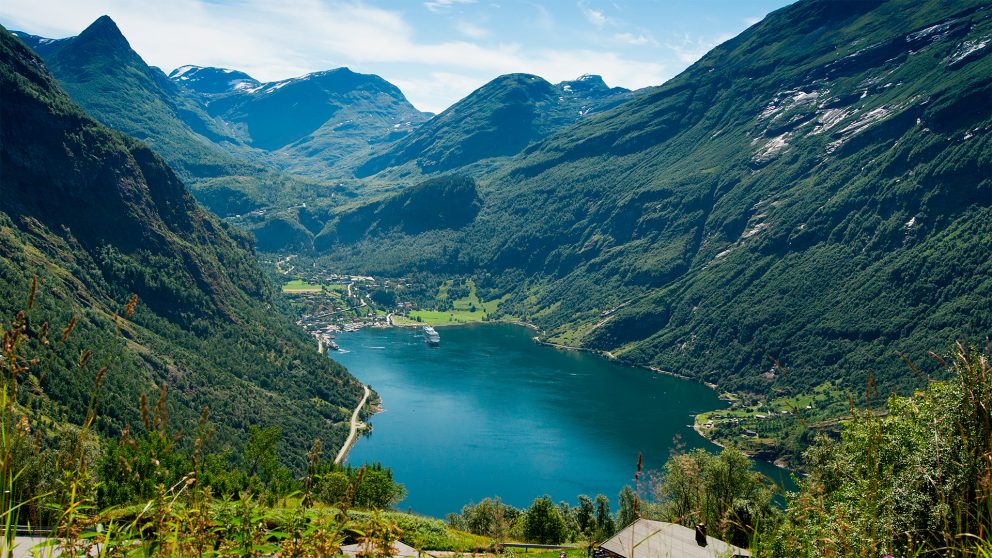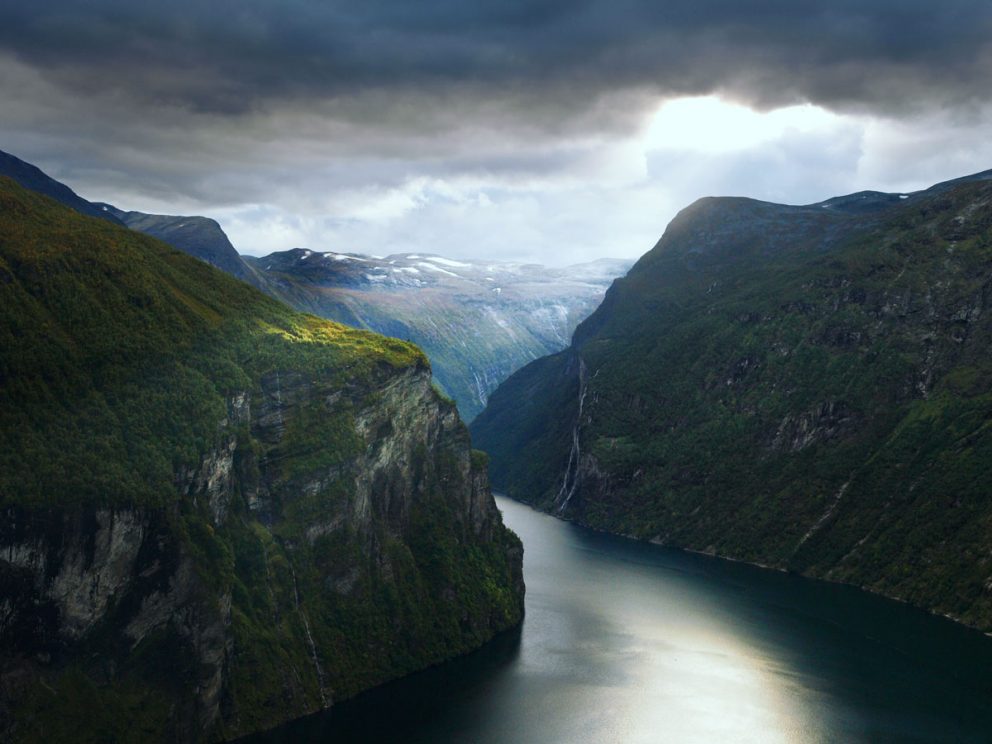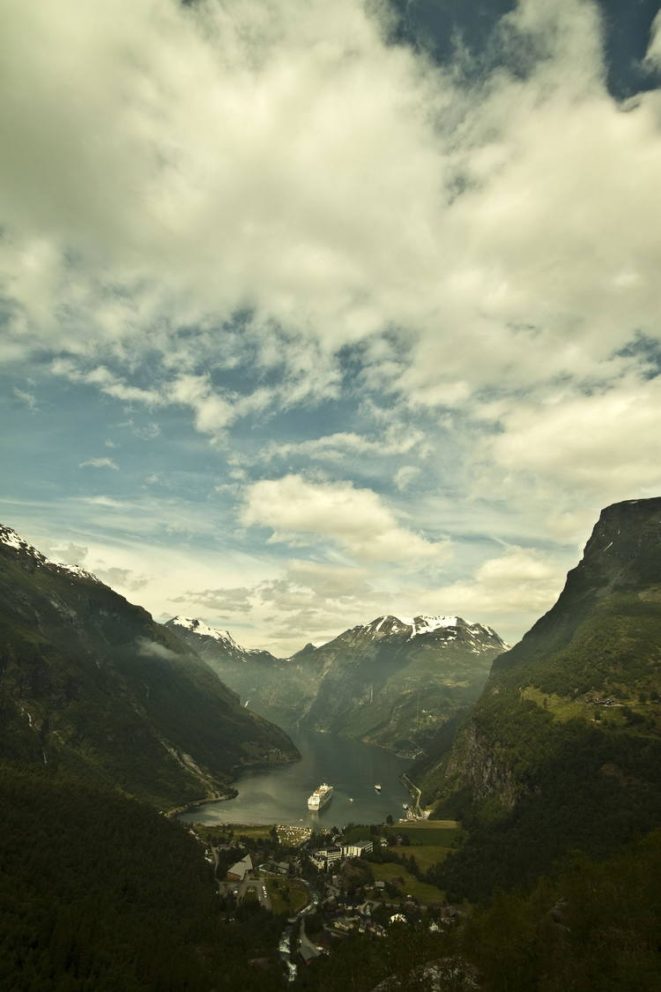World heritage
West Norwegian Fjords
The West Norwegian Fjords World Heritage site covers Geirangerfjord in Møre og Romsdal and Nærøyfjord in Vestland.
Situated in south-western Norway, north-east of Bergen, Geirangerfjord and Nærøyfjord, set 120 km from one another, are part of the west Norwegian fjord landscape, which stretches from Stavanger in the south to Andalsnes, 500 km to the north-east. The two fjords, among the world’s longest and deepest, are considered as archetypical fjord landscapes and among the most scenically outstanding anywhere. Their exceptional natural beauty is derived from their narrow and steep-sided crystalline rock walls that rise up to 1,400 m from the Norwegian Sea and extend 500 m below sea level. The sheer walls of the fjords have numerous waterfalls while free-flowing rivers cross their deciduous and coniferous forests to glacial lakes, glaciers and rugged mountains. The landscape features a range of supporting natural phenomena, both terrestrial and marine, such as submarine moraines and marine mammals.
The West Norwegian Fjords were inscribed on the World Heritage List in 2005.
Outstanding Universal Value
Brief synthesis
The starkly dramatic landscapes of Geirangerfjord and Nærøyfjord are exceptional in scale and grandeur in a country of spectacular fjords. Situated in south-western Norway, these fjords are among the world’s longest and deepest, and vary in breadth from just 250 m to 2.5 km wide. Fjord, a word of Norwegian origin, refers to a long, deep inlet of the sea between high cliffs formed by submergence of a glaciated valley. These two West Norwegian fjords are considered to be classic and complementary examples of this phenomenon, a sort of type locality for fjords that still display active geological processes.
Numerous waterfalls and free-flowing rivers, deciduous and coniferous woodlands and forests, glacial lakes, glaciers, rugged mountains and a range of other natural attributes combine towards making Geirangerfjord and Nærøyfjord among the most scenically outstanding landscapes in the world. A serial property covering an area of 122,712 ha, of which 10,746 ha is sea, these two fjords are separated from each other by a distance of 120 km. They form part of the West Norwegian fjord landscape, which stretches 500 km from Stavanger in the south to Åndalsnes in the north-east. Several inhabited villages and valleys are found along the fjords and inside the boundaries, and the landscape is supplemented (although not dominated) by remnants of its human historical past, which adds further interest and value to the property.
Criterion (vii): The Geirangerfjord and Nærøyfjord areas are considered to be among the most scenically outstanding fjord areas on the planet. Their outstanding natural beauty is derived from their narrow and steep-sided crystalline rock walls that rise up to 1400 m direct from the Norwegian Sea and extend 500 m below sea level. Along the sheer walls of the fjords are numerous waterfalls while free-flowing rivers run through deciduous and coniferous forest to glacial lakes, glaciers and rugged mountains. There is a great range of supporting natural phenomena, both terrestrial and marine such as submarine moraines and marine mammals. Remnants of old and now mostly abandoned transhumant farms add a cultural aspect to the dramatic natural landscape that complements and adds human interest to the area.
Criterion (viii): The West Norwegian Fjords are classic, superbly developed fjords, considered as the type locality for fjord landscapes in the world. They are comparable in scale and quality to other existing fjords on the World Heritage List and are distinguished by the climate and geological setting. The property displays a full range of the inner segments of two of the world’s longest and deepest fjords, and provides well-developed examples of young, active glaciation during the Pleistocene ice age. The ice- and wave-polished surfaces of the steep fjord sides provide superbly exposed and continuous three-dimensional sections through the bedrock. The record of the postglacial isostatic rebound of the crust and its geomorphic expression in the fjord landscape are significant, and represent key areas for the scientific study of slope instability and the resulting geohazards.
View photos of the West Norwegian Fjords
Integrity
The two fjord areas include all features that typically characterise a fjord landscape and its geological evolution. These include deep rock basins reaching depths far below sea level, prominent rock thresholds, high and steep cliffs, slide scars and avalanche deposits, moraines, till deposits, hanging valleys, so-called fish-hook or agnor valleys (formed by river capture), glaciers, rivers, waterfalls and surrounding mountain and catchment areas. Each fjord has a different morphology and geology and displays a different range of geomorphological features. Taken together, the Nærøyfjord and Geirangerfjord areas provide most of the features in their natural relationship that could be expected of a fjord landscape and its geological evolution. The boundaries of the serial property are appropriately defined to protect the geological features and the areas required to maintain the scenic qualities of the property. Legislation, staffing, budget and institutional structures in place are adequate to ensure its integrity.
Of the 200 fjords along the west coast of Norway, Nærøyfjord and Geirangerfjord are the least affected by human activity such as hydroelectric dams and infrastructure. Peridotite is currently quarried outside, but close to the Geirangerfjord component of the property and plans exists for another quarry nearby. These impacts are localized, and restoration will take place when extraction ceases. Underground extraction of anorthosite takes place in the Nærøyfjord area, and this may expand in the future. Though not directly adjacent to the fjord itself, the plant has a visual impact from the road in the Nærøydalen valley.
Protection and management requirements
The majority of the property is protected as an IUCN Category V “Protected Landscape” and several small areas within this are Category I “Strict Nature Reserve”. The legislative regulations embodied in the Norwegian Nature Diversity Act provide long-term protection for the full range of natural values. While private lands make up 85% of the property, inhabited parts are carefully controlled under the Planning and Building Act and mechanisms such as County, Municipal and Local Development Plans.
An effective management system includes advisory committees and a management council that meets regularly to facilitate the necessary management cooperation and co-ordination. A “Declaration of Intent” signed by all the relevant national agencies and the Borough Councils, County Councils and County Governors outlines the cooperative measures and “guarantees that the values in the area will endure.”
A comprehensive management plan addresses management objectives and includes guidelines for activities to preserve the Outstanding Universal Value in a long-term perspective. The existing monitoring system needs to be further developed.
Tourism pressures are intense in both fjords, but impacts are limited as most visitors access the property on cruise ships during a short visitor season. Adequate tourism management plans are an important tool for the long-term conservation of the property’s Outstanding Universal Value.
Mining and underground quarrying is a concern, and any expansion of these activities will not be permitted without an environmental impact assessment. This would ensure that any potential impact, including the export of the mined material and the need for related infrastructure, would not affect the property’s Outstanding Universal Value.
Geohazards are a concern for inhabited areas and existing infrastructure within the property. If more measures to protect people’s lives are to be implemented, detailed environmental impact assessments will need to be performed to ensure solutions and measures that will be compatible with the property’s Outstanding Universal Value. Risk-preparedness plans integrated in the overall management plan are essential for this property.




